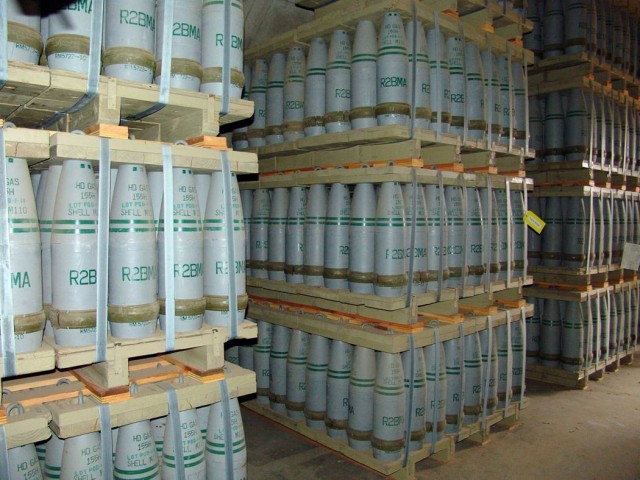
A store of World War Two era US Army chemical weapons is due to be destroyed in Colorado.
The store is at the US Army’s Pueblo Chemical Depot. Approval for the destruction of the more than 2500 tonnes of chemical weapons has been granted. The entire store is mustard agent.
The US is committed to destroying its entire chemical weapons stockpile, however much planning and preparation is required to correctly dispose of each type of chemical weapon.
For the mustard agent months of planning, testing and review has been conducted, along with supervision from relevant regulatory authorities.
The US Army has developed a system specifically for destroying chemical weapons, known as the Explosive Destruction System, and this will be used to destroy the agent, which can’t be disposed of using other processing systems available to the military.
The agent has been stored in sealed containers since World War Two, and has, in the past, experienced some leakage where the containers have weakened over time.
At the Pueblo plant there is a huge stockpile of chemical weapons. The mustard agent makes up around only 0.2% of the entire store.
The system that will destroy the agent places the mustard inside a munition which is then supplied with an explosive cutting charge. Once that is done, a neutralising chemical is added and the mix is heated to a high temperature to destroy the mustard completely.
The cutting charge stops the explosive reaction of the munition. Any resulting smoke or pieces of the agent are kept sealed within a steel vessel that is sealed and once the process is complete a laboratory test will declare whether or not the chemical agent has been destroyed.
The process has been successfully used and tested in numerous operations to destroy chemical weapons throughout the US, the U.S. Department of Defense reports.
The process was jointly designed by the US Army and Sandia National Laboratories, in an effort to be able to handle chemical weapons with safety and in an environmentally friendly manner.
Once the store of mustard agent has been disposed of, the plant will go on to work on the remaining stockpile of chemical weapons at Pueblo, starting in 2015 or 2016.
